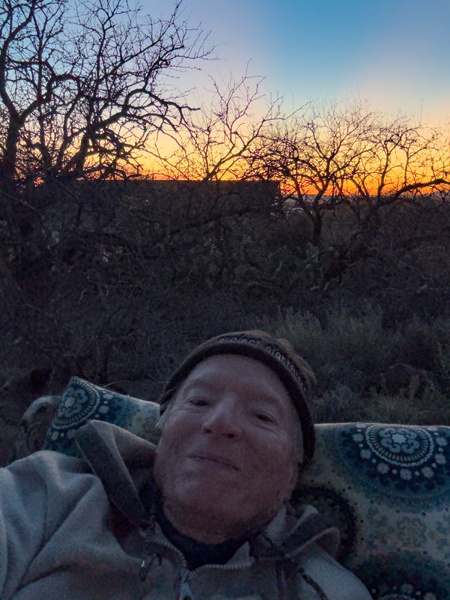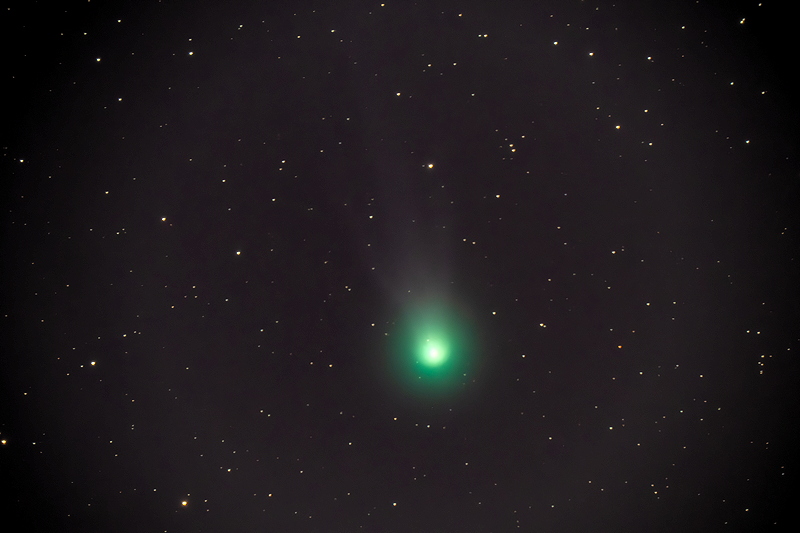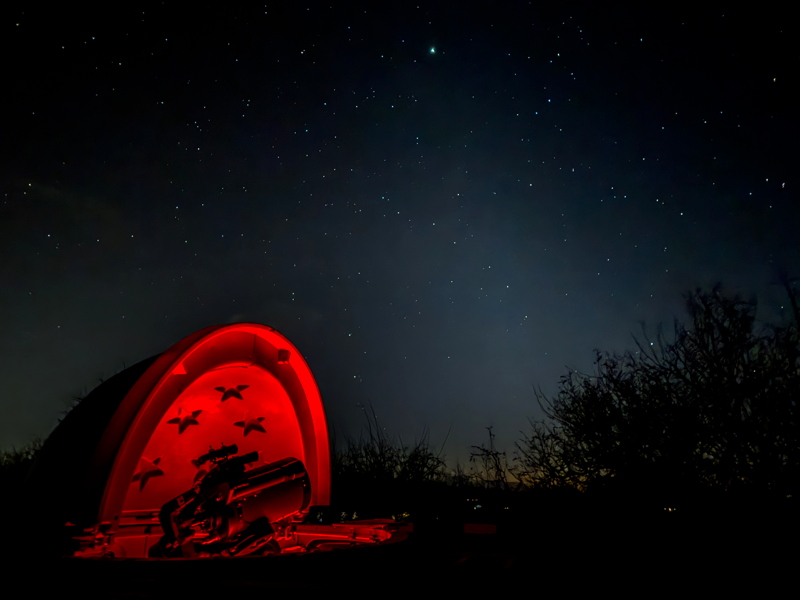Comet 12P/Pons-Brooks, Zodiacal Light
Posted: 2 March 2024
|
Open: Friday, 1 March 2024, 1814 MST Temperature: 75°F |
Session: 1944 Conditions: Mostly clear |
Equipment:
12" f/8 LX600 w/StarLock
2" 24mm UWA eyepiece
Focal reducer
12x50 binoculars
Camera:
iPhone 15 Pro Max
D850 DSLR
1821 MST: LX600 ON, StarLock OFF, High Precision OFF.
1822 MST: Sunset.
1824 MST: Viewed Jupiter, 102X. Two Galilean Moons were visible in the bright twilight sky.
1827 MST: Viewed Jupiter, 102X. Three Galilean Moons were now visible. Clouds were increasing from the southwest.
1832 MST: Relaxed on the observatory patio bench to wait for the sky to get darker and to watch the stars come out.

1857 MST: Back inside the observatory.
Viewed Jupiter, 102X. Three of the four Galilean Moons were still visible.
1900 MST: Wi-Fi ON. Used SkySafari Pro 7 on the iPhone 15 Pro Max to GOTO Comet 12P/Pons-Brooks. Viewed the comet, 102X. A nice coma was visible, but no tail was seen in the twilight sky.
Mounted the D850 DSLR at prime focus + focal reducer, focused on the star Shedir, locked the 12" primary mirror, and did a GOTO back to the comet.
1916 MST: StarLock ON.
Imaged Comet 12P/Pons-Brooks, StarLock autoguided, 30 seconds exposure, various ISO settings, White Balance 4550K. This image is ISO 4000, slightly cropped from the full-frame photograph. The comet's short tail is visible going upward from the comet nucleus and coma.

1928 MST: StarLock OFF.
The comet, low in the northwestern sky, was getting close to a tree near the observatory.
1930 MST: Saw the Zodiacal Light.
1932 MST: Wi-Fi OFF.
1935 MST: Stepped outside of the observatory and took this handheld iPhone 15 Pro Max photo of the Zodiacal Light using the Camera app (Night Mode, 3 seconds, 1X lens). Jupiter is the bright object at the top of the photograph.

1940 MST: Viewed Comet 12P/Pons-Brooks, 12x50 binoculars. The coma was large in the binoculars and there was a hint of a tail visible. The comet was not yet naked eye visible, but it was brighter than it was the previous night.
I then viewed the comet in the 12" telescope, 102X. A short tail was now visible in the darker sky.
1949 MST: LX600 OFF.
|
Close: Friday, 1 March 2024, 2000 MST Temperature: 56°F |
Session Length: 1h 46m Conditions: Partly cloudy |
I have posted my Eyepiece Occulting Bar article.
Comments are welcome using Email. Please read the Email Etiquette guidance.
Cassiopeia Observatory Home Page
Copyright ©2024 Michael L. Weasner / mweasner@mac.com.
URL = http://www.weasner.com/co/Reports/2024/03/02/index.html
